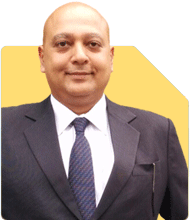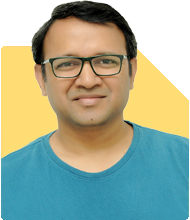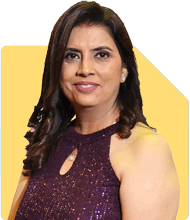Sushil Sukhwani | Answer |Ask -Follow
Study Abroad Expert - Answered on Sep 11, 2023

Deat Sir, I am 2nd year B.Tech student (Computer Science) and would like to persue MS either in UK or US. I Dont have any knowledge about the right process. Can you please guide me how should i prepare for the same?
First and foremost, thank you for contacting us. An important move in your academic and professional journey involves preparing to pursue an MS in Computer Science in the UK or the US. For the same, careful planning and preparation is crucial. The process involves the below mentioned steps:
1. Study available options: The first step involves conducting a thorough research on universities and courses offered in both the UK and the US. Take into account each program’s standing, the location, expense, and particular research fields or specialties you are interested in.
2. Academic Readiness: Ensure you have a good academic record. Maintain a high grade point average (GPA) and enroll in specialized courses in your preferred field.
3. Appear for Standardized Tests: English proficiency tests like the TOEFL or IELTS are often required for admission to universities in the UK. On the other hand, the GRE is required by majority of the universities in USA. Look into the unique criteria of your programs’ of interest.
4. Statement of Purpose/Personal Statement: Compose a convincing SOP that highlights your academic and professional ambitions, your reasons for wanting to pursue an MS, and your interest in the said course and university.
5. Recommendation Letters: LoRs are of prime importance in the application process. You will need to submit letters of recommendation from professors who can attest to your intellectual prowess and character.
6. Curriculum Vitae/Resume: Make a strong CV outlining your academic accomplishments, research expertise, apprenticeships, and any pertinent projects or publications you’ve submitted.
7. Plans your Finances: Look into the finance possibilities, scholarships, and opportunities for assistantship. International students studying in both, the UK and the US are offered scholarships.
8. Submission Deadlines: Each university has different deadlines, keep tabs on application deadlines for the programs of your choosing.
9. Visa Prerequisites: Familiarize yourself with the visa requirements to study in the UK or US. The application process for each country is unique, and you will require to apply for a student visa.
10. Prepare for Interviews (if necessary): As part of the application process, certain programs may require students to appear for interviews. Prepare for the same by evaluating your application documents and practicing your answers to such inquiries.
11. Submit your Applications: Via the official websites of the universities or through the application portals, submit your applications. Take note of all the necessary documents and costs.
On receiving admission offers, the next step involves preparing to migrate. As part of this, you should find accommodation, organize your funds, and get the required immunizations or medical exams done. Plan your travel beforehand, and on arrival, attend the orientation program held by the university. Prepare yourself for both academic and cultural adaptations. For assistance, consult academic counselors and avail international student services. Start socializing with other students and professors early. Search for internship openings that match your professional objectives.
The application process being cut-throat, you will need to begin well in advance and work hard on every part of your application. In addition, consult professors, mentors, and former students who have already undergone the procedure. All the very best for your MS journey!
For more information, you can visit our website.
You may like to see similar questions and answers below
Patrick Dsouza |1428 Answers |Ask -Follow
CAT, XAT, CMAT, CET Expert - Answered on Apr 29, 2024
Geeta Ratra | Answer |Ask -Follow
Visas, Study Abroad Expert - Answered on May 21, 2024
Sushil Sukhwani | Answer |Ask -Follow
Study Abroad Expert - Answered on Aug 16, 2024
Patrick Dsouza |1428 Answers |Ask -Follow
CAT, XAT, CMAT, CET Expert - Answered on Sep 10, 2024
Patrick Dsouza |1428 Answers |Ask -Follow
CAT, XAT, CMAT, CET Expert - Answered on Jan 11, 2025
Dr Dipankar Dutta |1836 Answers |Ask -Follow
Tech Careers and Skill Development Expert - Answered on Dec 05, 2025
Ulhas Joshi |280 Answers |Ask -Follow
Mutual Fund Expert - Answered on Dec 05, 2025
Dr Dipankar Dutta |1836 Answers |Ask -Follow
Tech Careers and Skill Development Expert - Answered on Dec 04, 2025
Ravi Mittal |676 Answers |Ask -Follow
Dating, Relationships Expert - Answered on Dec 04, 2025
Anu Krishna |1745 Answers |Ask -Follow
Relationships Expert, Mind Coach - Answered on Dec 04, 2025
Anu Krishna |1745 Answers |Ask -Follow
Relationships Expert, Mind Coach - Answered on Dec 04, 2025
Mayank Chandel |2562 Answers |Ask -Follow
IIT-JEE, NEET-UG, SAT, CLAT, CA, CS Exam Expert - Answered on Dec 04, 2025
Mayank Chandel |2562 Answers |Ask -Follow
IIT-JEE, NEET-UG, SAT, CLAT, CA, CS Exam Expert - Answered on Dec 04, 2025
Mayank Chandel |2562 Answers |Ask -Follow
IIT-JEE, NEET-UG, SAT, CLAT, CA, CS Exam Expert - Answered on Dec 04, 2025
Mayank Chandel |2562 Answers |Ask -Follow
IIT-JEE, NEET-UG, SAT, CLAT, CA, CS Exam Expert - Answered on Dec 04, 2025

























